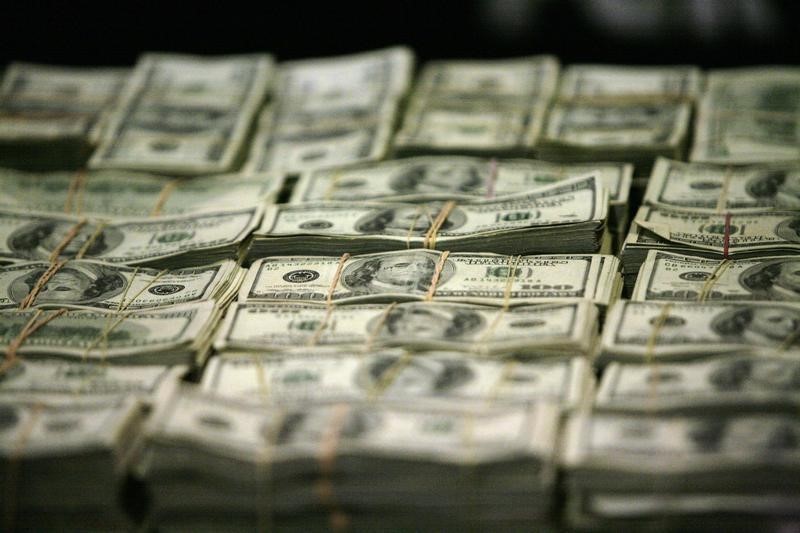Investing.com - The dollar continued to hover at 32-month lows against other majors on Friday, as concerns over the potential impact of Hurricane Irma on the Florida coast and tensions with North Korea still pummeled the greenback.
EUR/USD was up 0.35% at 1.2064, the highest since January 2015.
The single currency remained broadly supported after the European Central Bank left interest rates unchanged as expected on Thursday and signaled that information on the tapering of the central bank's asset-purchase program would be delivered in October.
Meanwhile, sentiment on the greenback remained vulnerable as markets monitored the advancement of Hurricane Irma. The category 5 storm is projected to hit Florida over the weekend.
Market participants seemed to shrug off remarks by New York Federal Reserve President William Dudley on Thursday calling on the U.S. central bank to continue gradually raising interest rates, as low inflation should rebound.
The safe-haven yen and Swiss franc pushed higher, with USD/JPY losing 0.94% to a fresh 10-month low of 107.42 and with USD/CHF sliding 0.64% to 0.9445.
Investors were also cautious amid speculation North Korea could launch an intercontinental ballistic missile on Saturday, which will mark the anniversary of the nation's foundation.
U.S. President Donald Trump said on Thursday that he would prefer not to use military action against Pyongyang to counter its nuclear and missile threat but that if he did it would be a "very sad day" for the North-Korean leadership.
In Japan, data earlier showed that gross domestic product expanded by 0.6% in the second quarter, down from an initial estimate of 1.0% and disappointing expectations for a growth rate of 0.7%.
Elsewhere, GBP/USD advanced 0.78% to a five-week high of 1.3213 after data showed that UK manufacturing production rose more than forecast in July, while industrial production increased in line with expectations.
A separate report showed that the UK trade deficit narrowed to £11.58 billion in July from a revised £11.53 billion the previous month.
The Australian and New Zealand dollars remained stronger, with AUD/USD up 0.71% at 0.8105 and with NZD/USD rallying 1.04% to 0.7310.
Data on Friday showed that China's exports increased by an annualized rate of 5.5% last month and that imports jumped 13.3%.
China is Australia's biggest export partner and New Zealand's second biggest export partner.
Meanwhile, USD/CAD fell 0.31% to a 28-month low of 1.2083.
The U.S. dollar index, which measures the greenback’s strength against a trade-weighted basket of six major currencies, was down 0.47% at 91.06 by 08:25 a.m. ET (12:25 GMT), the lowest level since January 2015.
